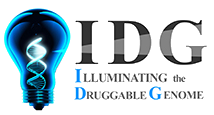Drug results: 15
| methyl salicylate | used in over-the-counter liniments, ointments, lotions for relief of musculoskeletal aches and pains; has hemolytic effect on human & sheep erythrocytes; RN given refers to parent cpd; structure in Merck Index, 9th ed, #5990 |
|
| cineole | A monoterpene and cyclohexanol derivative that is the major component of EUCALYPTUS OIL. It is used in mouthwash, insect repellent, and as a cough suppressant, and also is widely used as a flavoring agent and solvent. It has antimicrobial properties. |
|
| thymol | A phenol obtained from thyme oil or other volatile oils used as a stabilizer in pharmaceutical preparations, and as an antiseptic (antibacterial or antifungal) agent. |
|
| camphor | A bicyclic monoterpene ketone found widely in plants, especially CINNAMOMUM CAMPHORA. It is used topically as a skin antipruritic and as an anti-infective agent. |
|
| capsaicin | An alkylamide found in CAPSICUM that acts at TRPV CATION CHANNELS. |
|
| levomenthol | A monoterpene cyclohexanol produced from mint oils. |
|
| menthyl salicylate |
|
|
| lidocaine | A local anesthetic and cardiac depressant used as an antiarrhythmia agent. Its actions are more intense and its effects more prolonged than those of PROCAINE but its duration of action is shorter than that of BUPIVACAINE or PRILOCAINE. |
|
| methyl nicotinate | erythema provoked is basis of a methylnicotinate test of anti-inflammatories |
|
| zinc oxide | A mild astringent and topical protectant with some antiseptic action. It is also used in bandages, pastes, ointments, dental cements, and as a sunblock. |
|
| sodium fluoride | A source of inorganic fluoride which is used topically to prevent dental caries. | |
| chlorphenamine | A histamine H1 antagonist used in allergic reactions, hay fever, rhinitis, urticaria, and asthma. It has also been used in veterinary applications. One of the most widely used of the classical antihistaminics, it generally causes less drowsiness and sedation than PROMETHAZINE. |
|
| histamine | An amine derived by enzymatic decarboxylation of HISTIDINE. It is a powerful stimulant of gastric secretion, a constrictor of bronchial smooth muscle, a vasodilator, and also a centrally acting neurotransmitter. |
|
| diphenhydramine | A histamine H1 antagonist used as an antiemetic, antitussive, for dermatoses and pruritus, for hypersensitivity reactions, as a hypnotic, an antiparkinson, and as an ingredient in common cold preparations. It has some undesired antimuscarinic and sedative effects. |
|
| tocofersolan | A natural tocopherol and one of the most potent antioxidant tocopherols. It exhibits antioxidant activity by virtue of the phenolic hydrogen on the 2H-1-benzopyran-6-ol nucleus. It has four methyl groups on the 6-chromanol nucleus. The natural d form of alpha-tocopherol is more active than its synthetic dl-alpha-tocopherol racemic mixture. |
|



